In our paper, AIVC is evaluated against the HEVC Test Model (HM) 16.22 on the CLIC 2021 validation dataset. In order to get comprehensive results, 3 coding configurations are evaluated:
- Random Access (RA): One I frame and One P frame each 32 images, other frames are B frames
- Low-delay P (LDP): One I frame each 32 images, other frames are P frames
- All Intra (AI): All frames are I frames
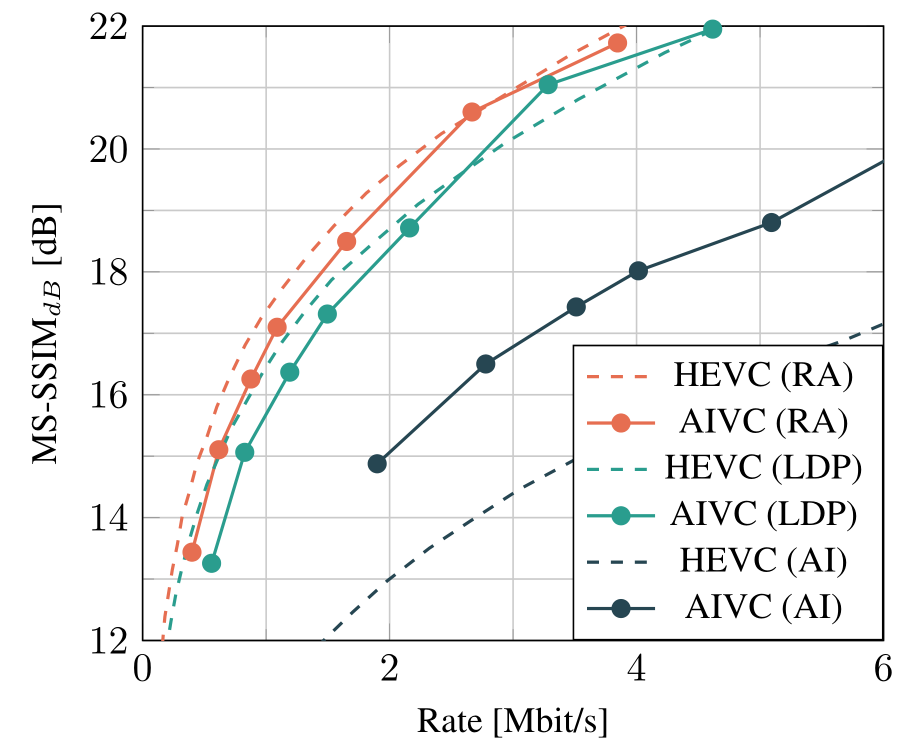
Results of AIVC vs HM16.22 on the CLIC21 validation set.
HEVC test sequences
Alongside the results on the CLIC 2021
dataset provided in the paper, we also assess the performance of AIVC on the
HEVC test sequences. AIVC outperforms HEVC for All Intra coding. As such, these results focus on Random Access (RA) and Low-delay P (LDP) configurations.
Unlike the results shown in the paper, the anchors here are x264 and x265. The following command is used to code videos with x264 and x265 in the random access configuration:
Unlike the results shown in the paper, the anchors here are x264 and x265. The following command is used to code videos with x264 and x265 in the random access configuration:
ffmpeg -video_size WxH -i raw_video.yuv
-c:v lib<codec> # <codec>: either x264 or x265
-pix_fmt yuv420p
-<codec>-params "keyint=<IP>:min_keyint=<IP>" # <IP>: intra period, set to 32
# <codec>: either x264 or x265
-crf <QP> # <QP>: Quality factor (22, 27, 32, 37, 42)
-preset medium -f rawvideo bitstream.bin
The low-delay P configuration is obtained by adding the -tune zerolatency option.
The raw result files are available here.
Class B: 1080p sequences
Open images in a new tab to zoom in
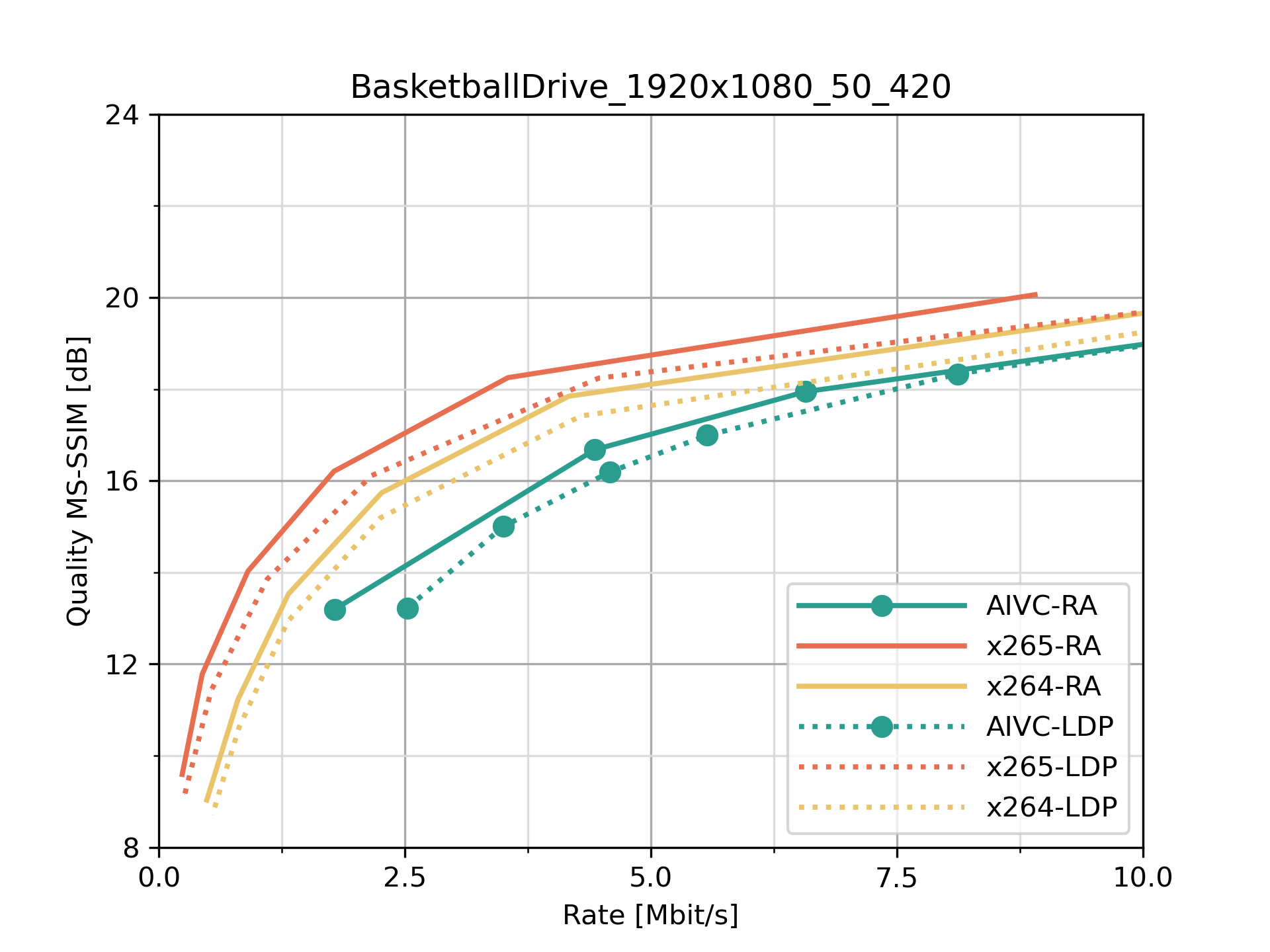 |
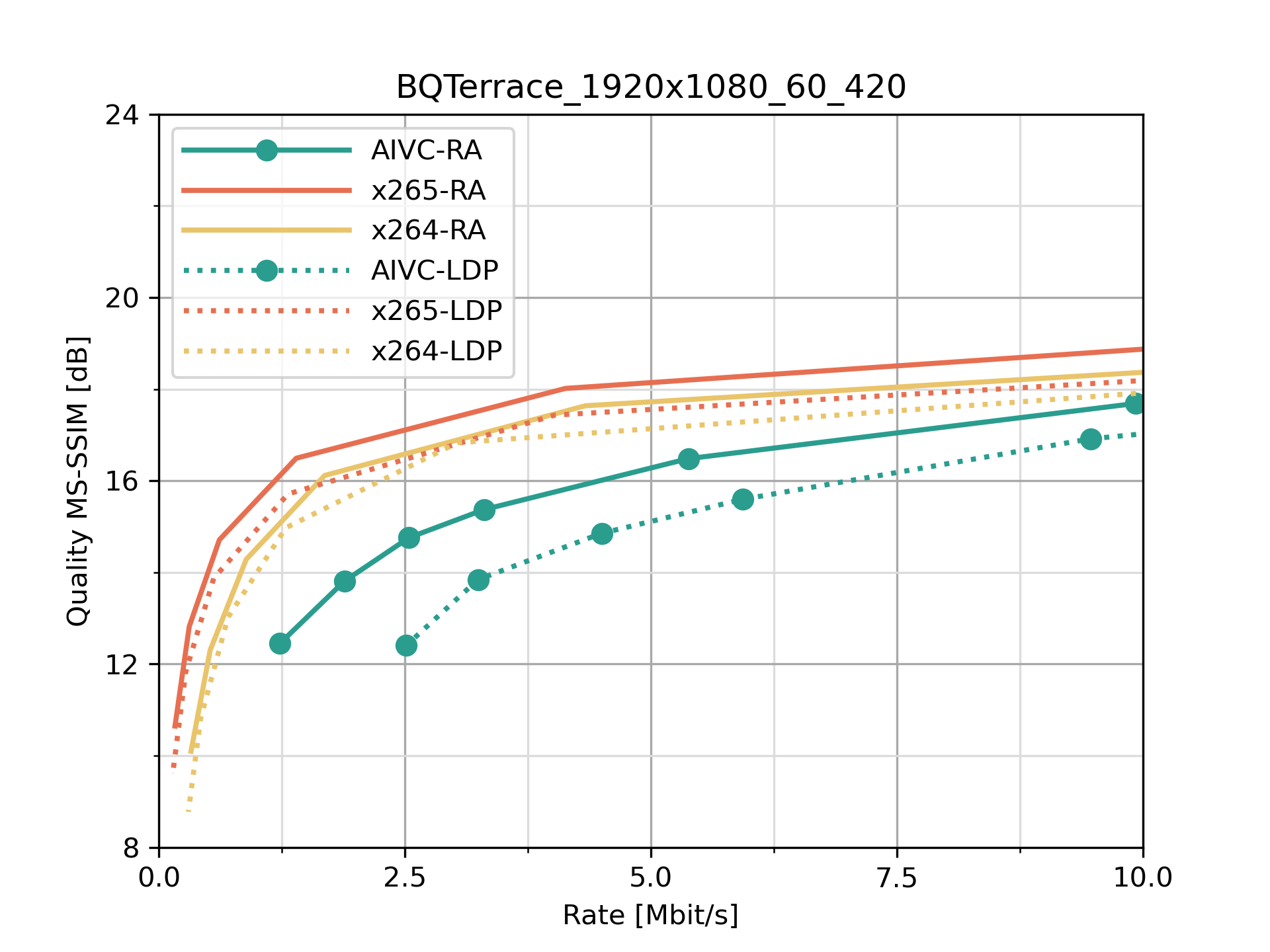 |
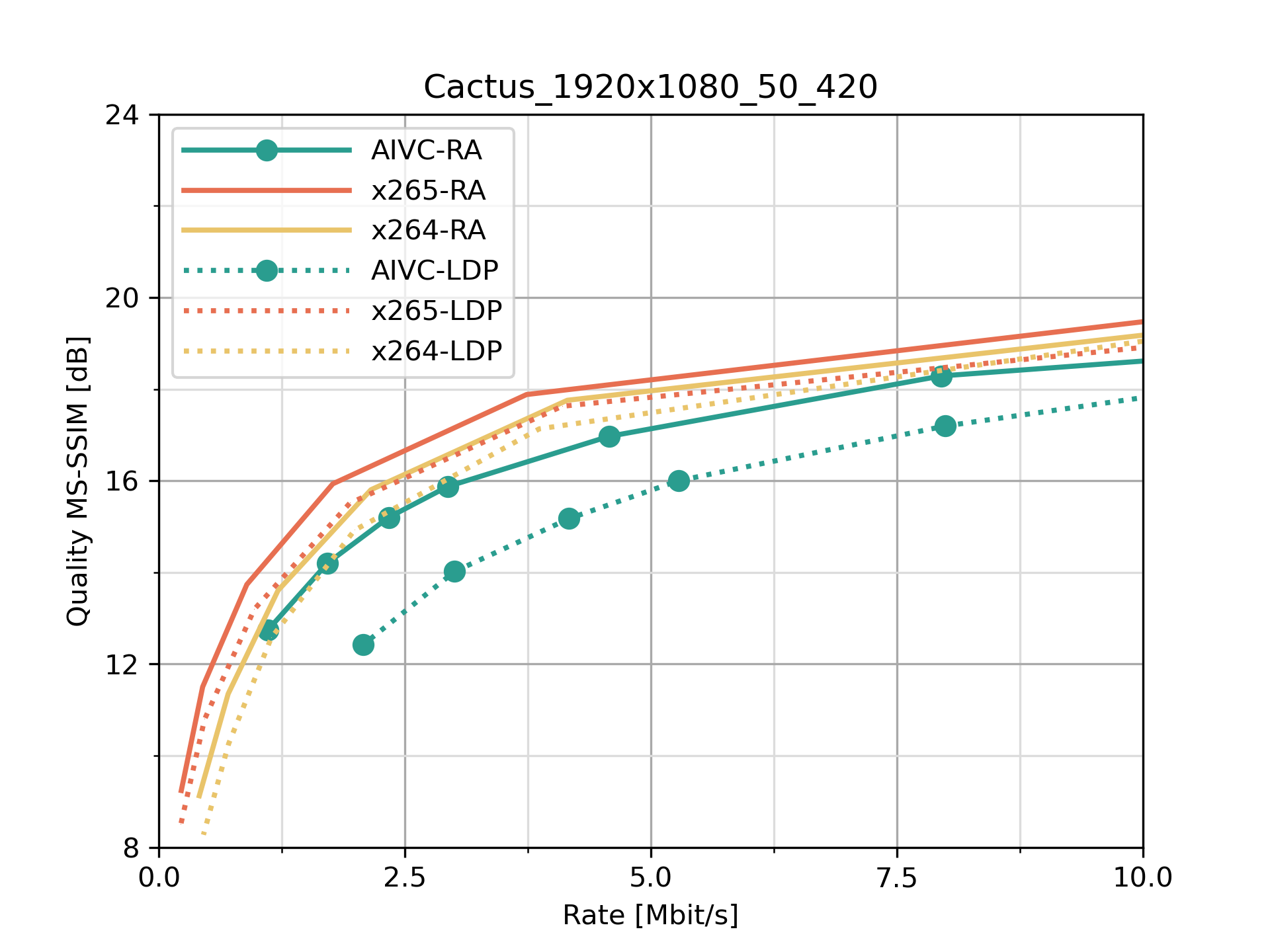 |
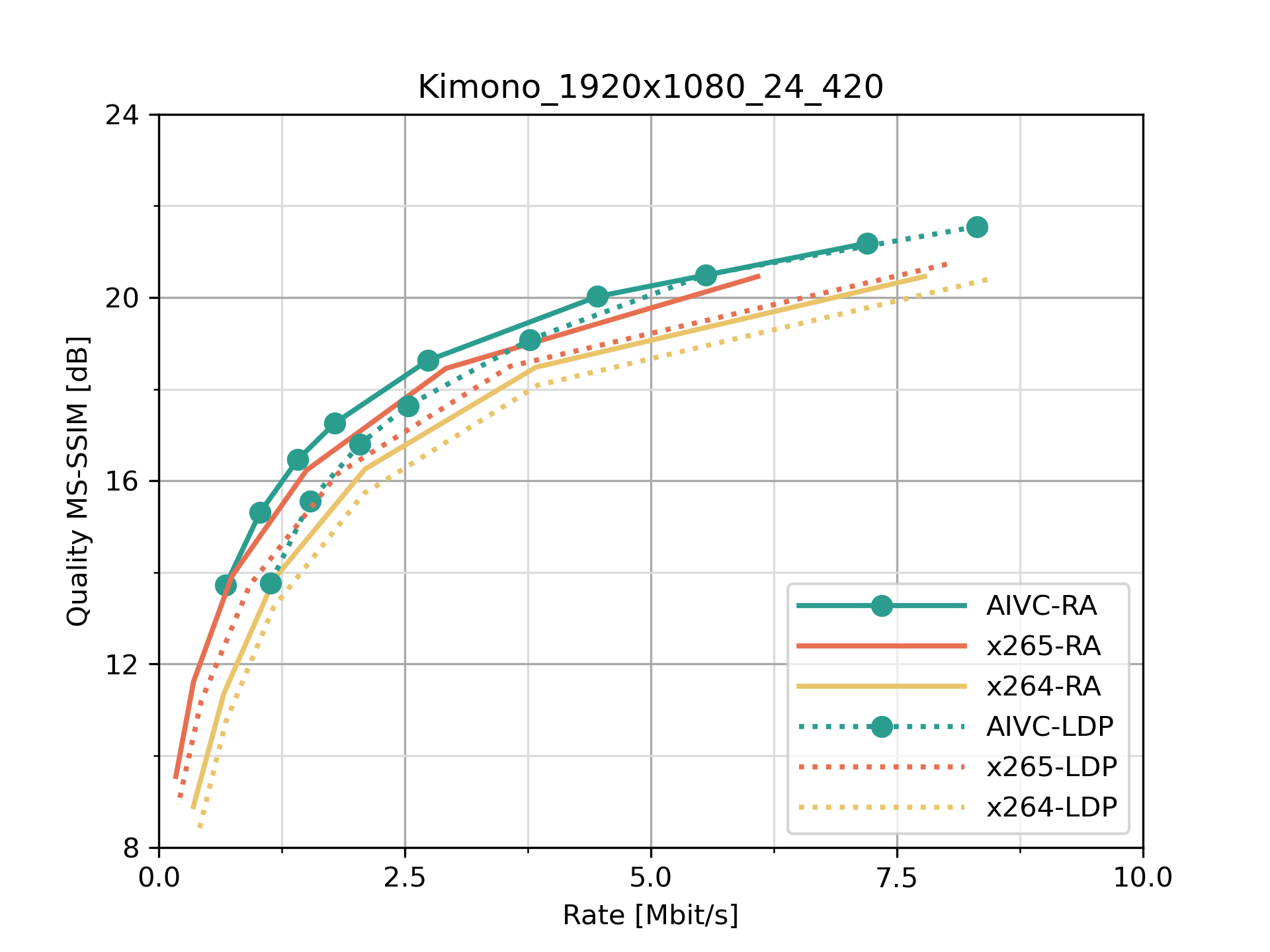 |
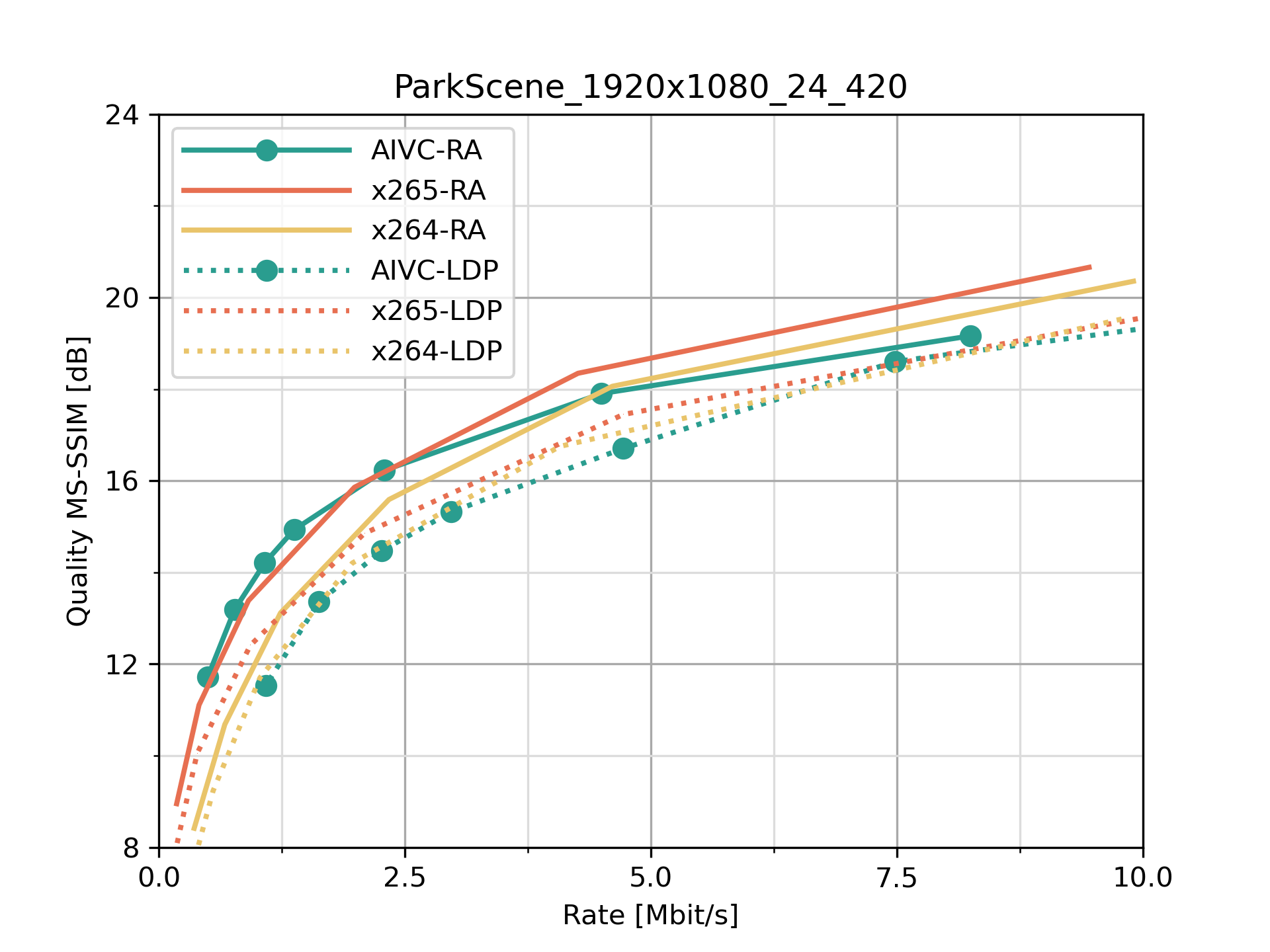 |
Class C: 480p sequences
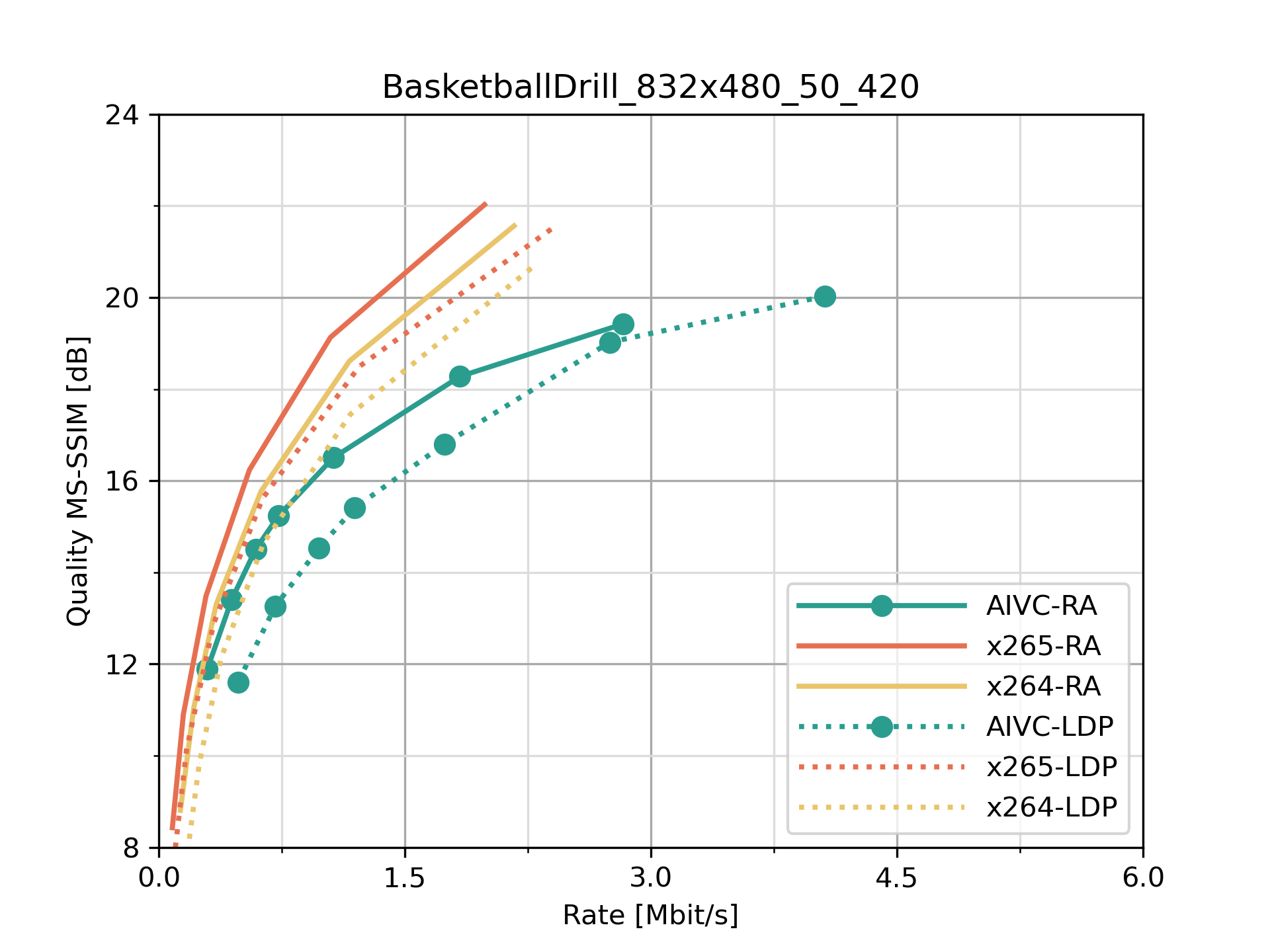 |
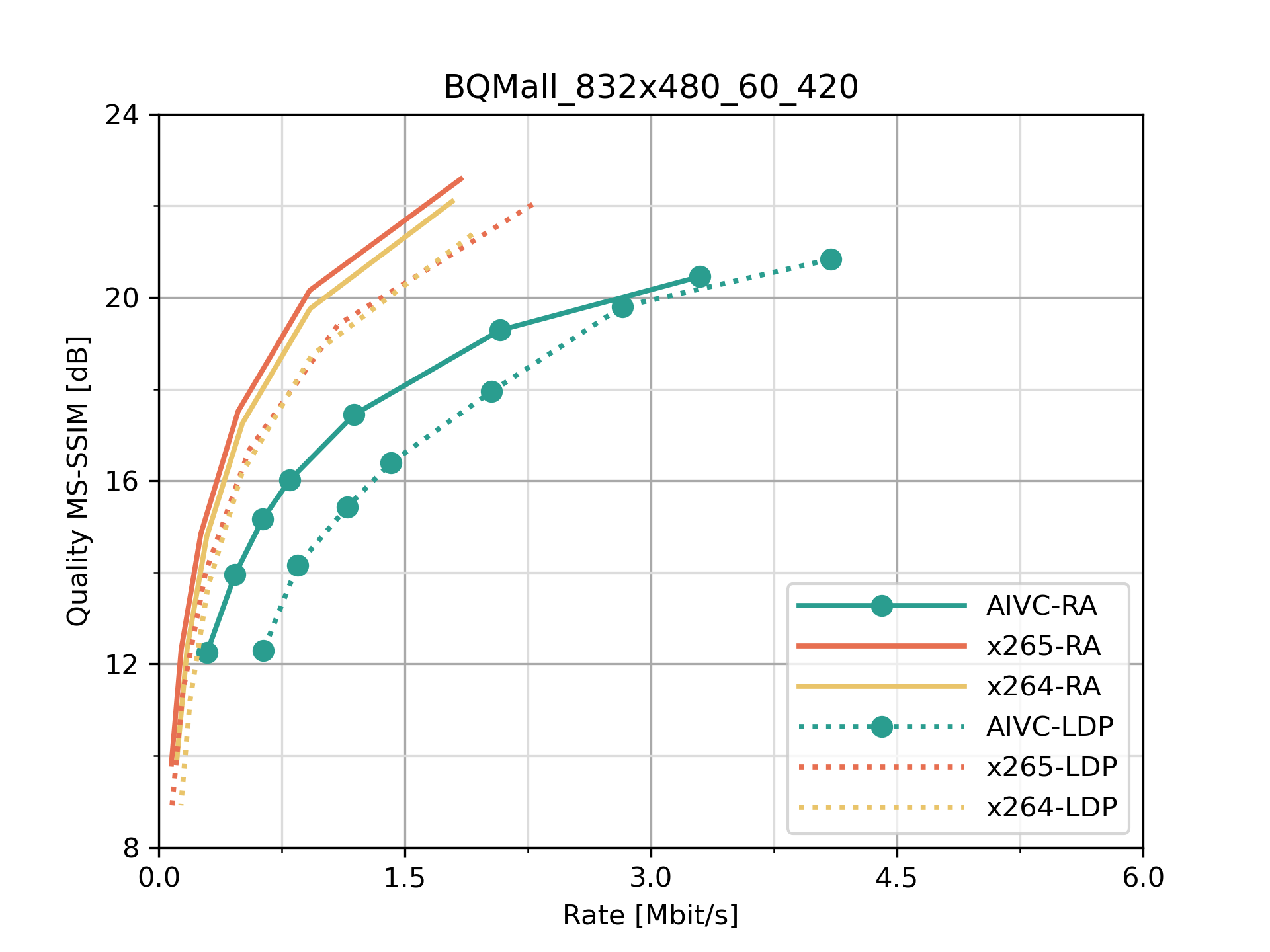 |
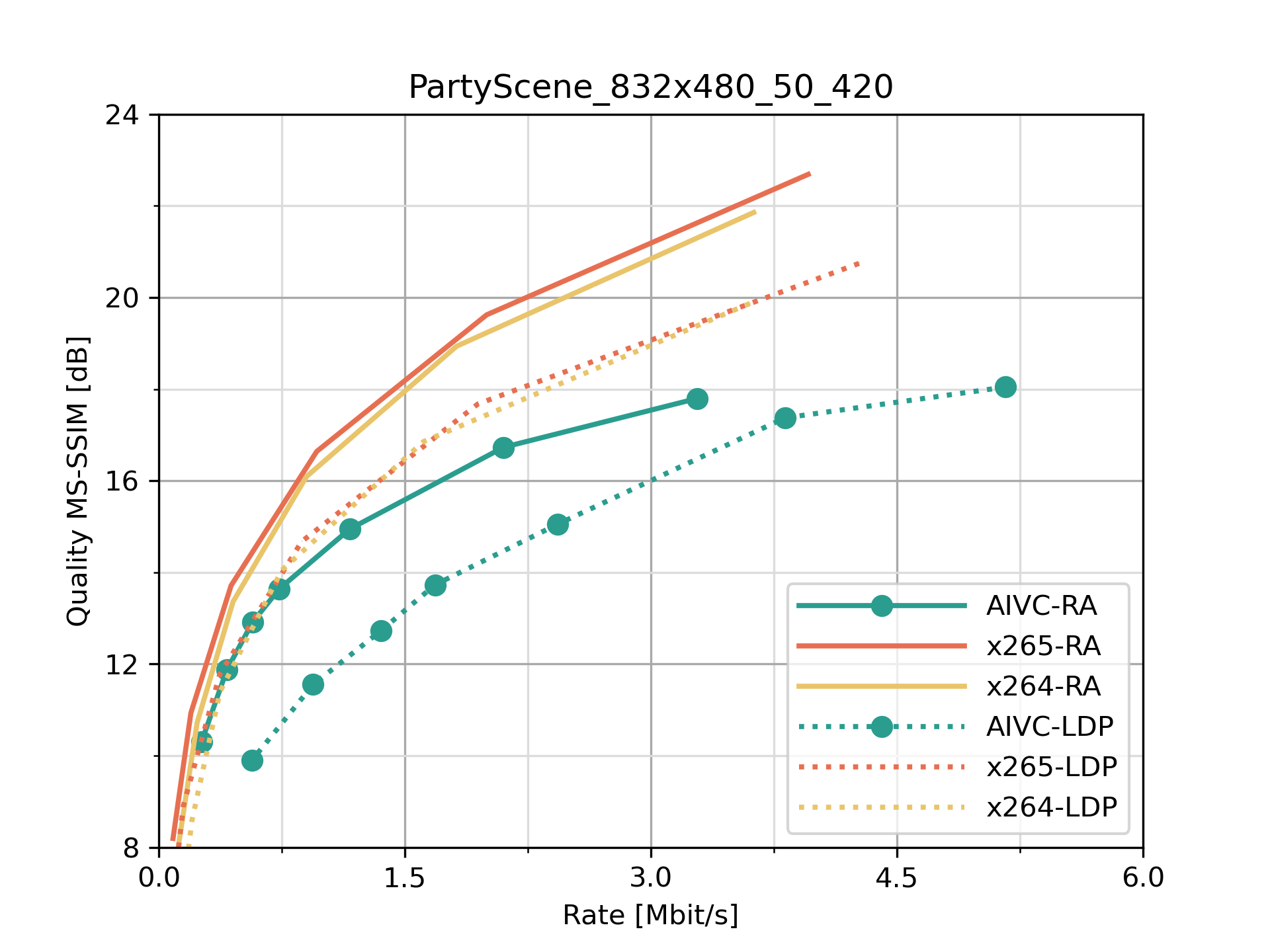 |
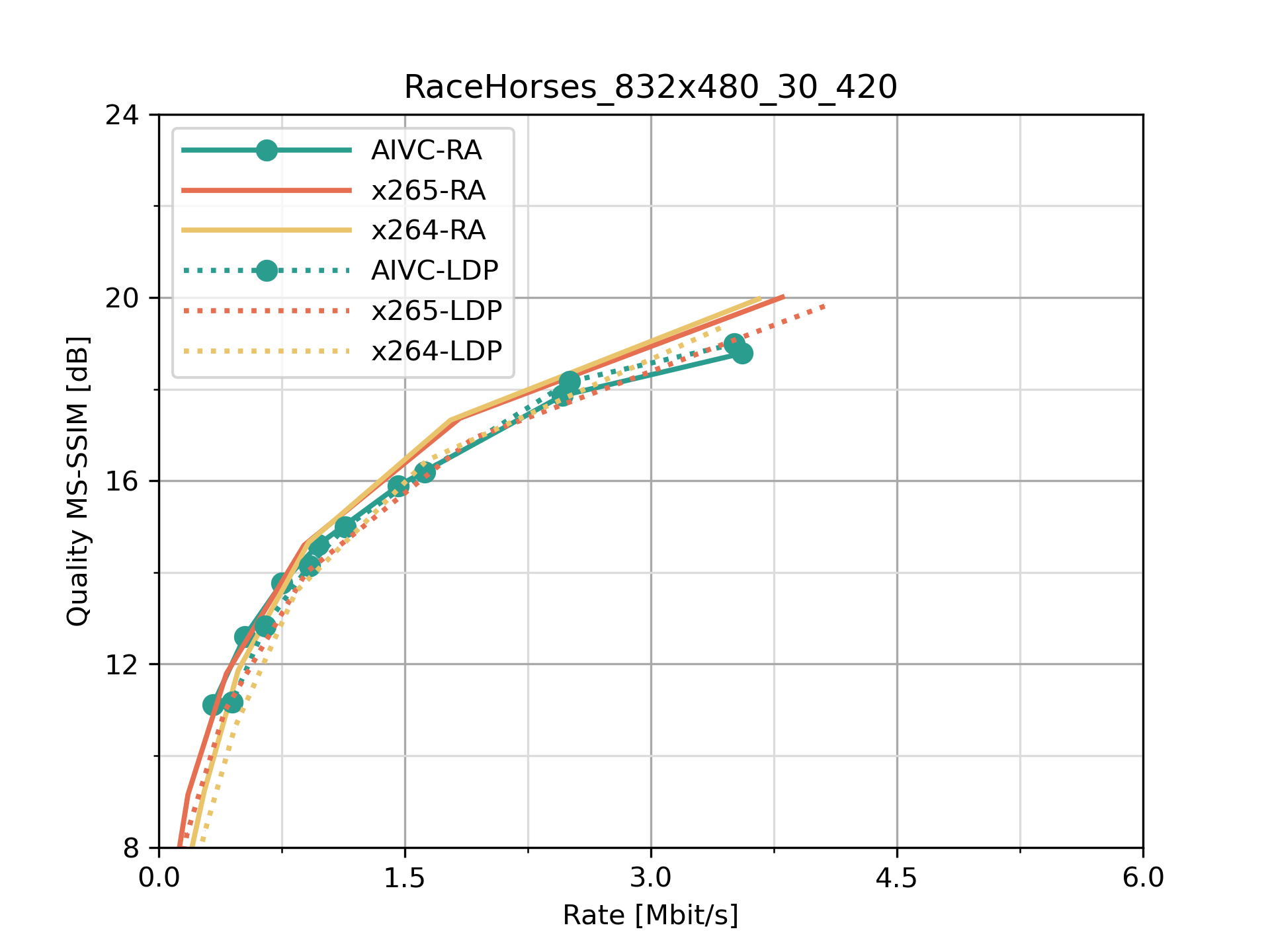 |
Class D: 240p sequences
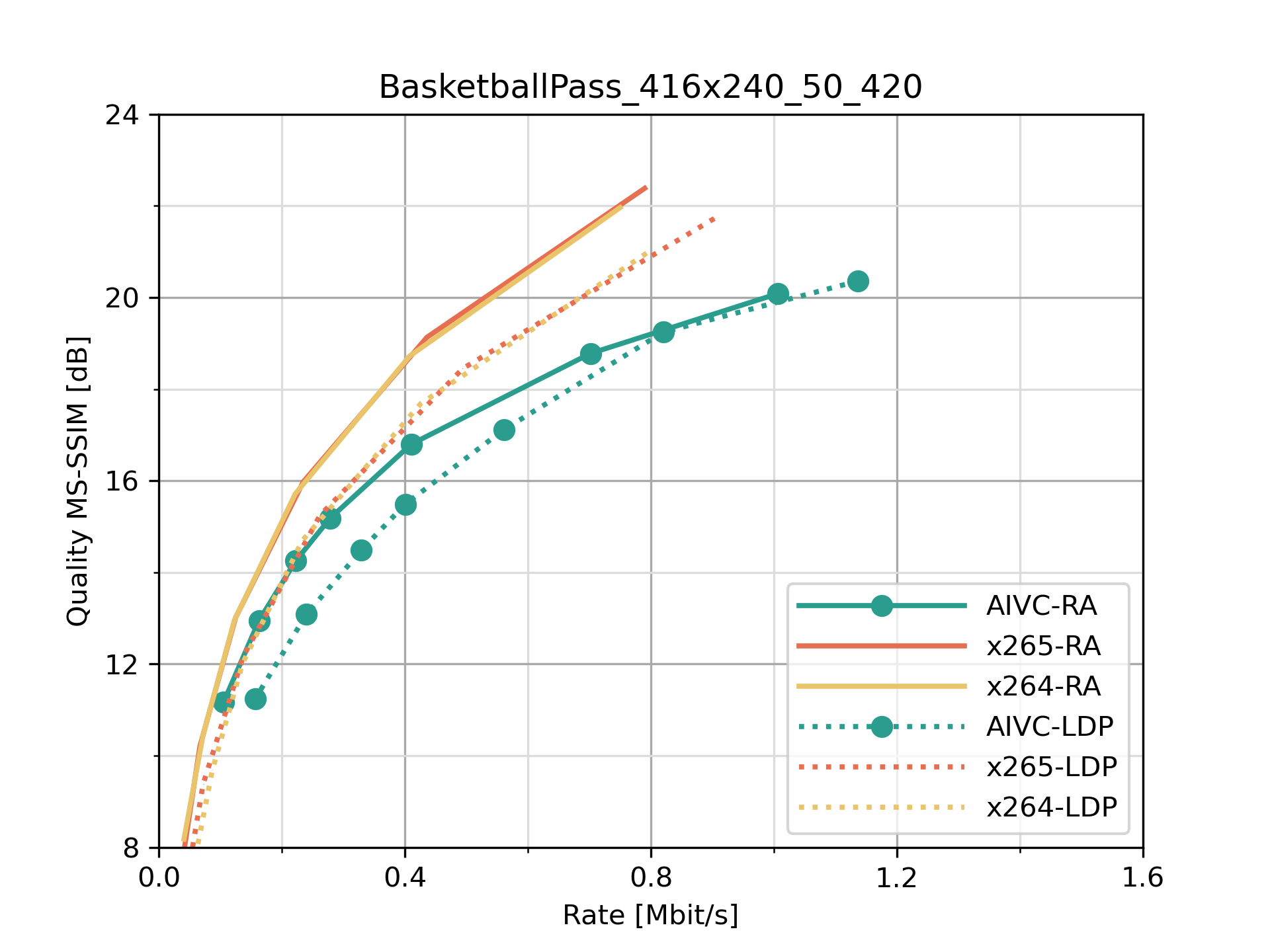 |
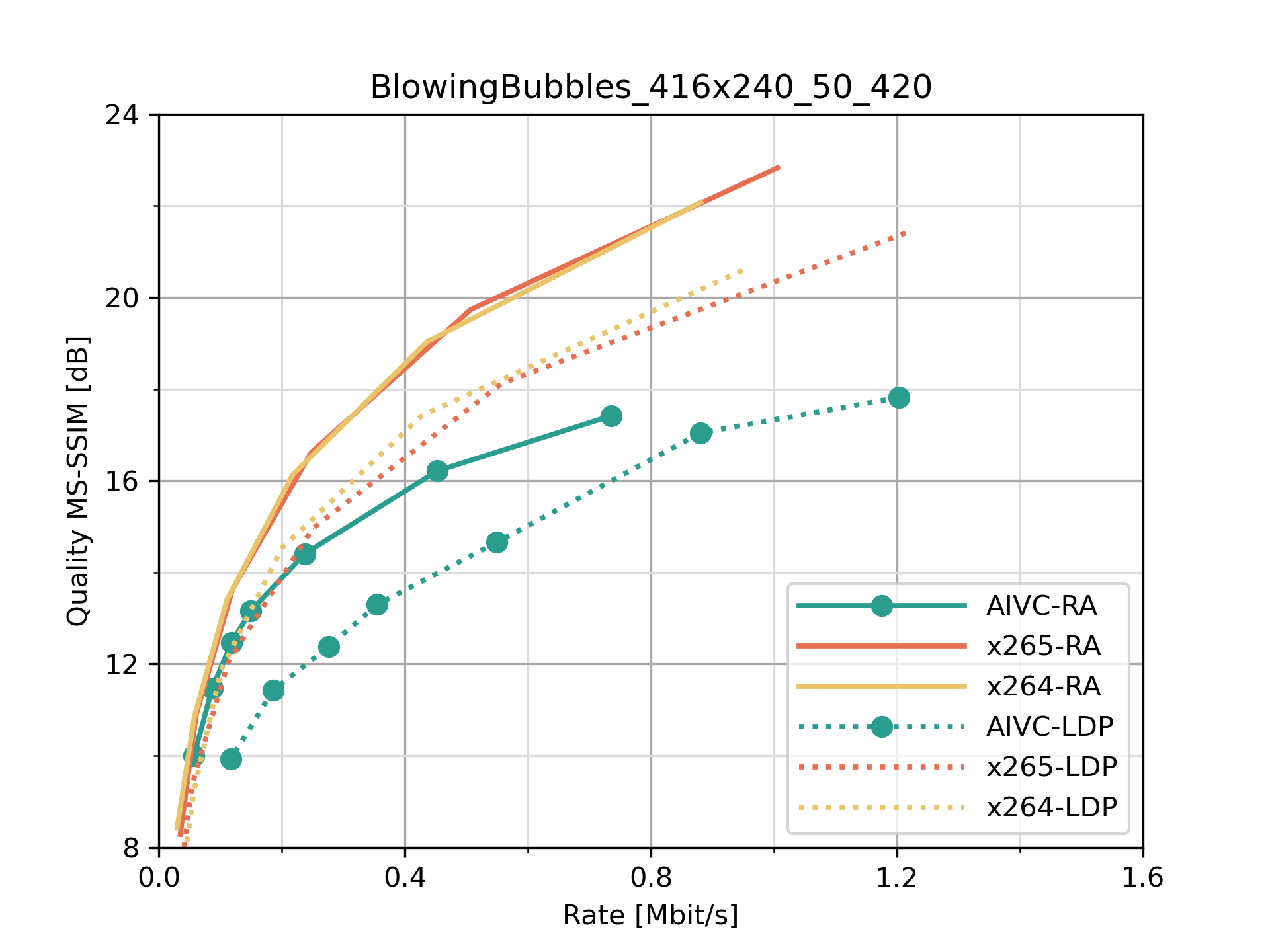 |
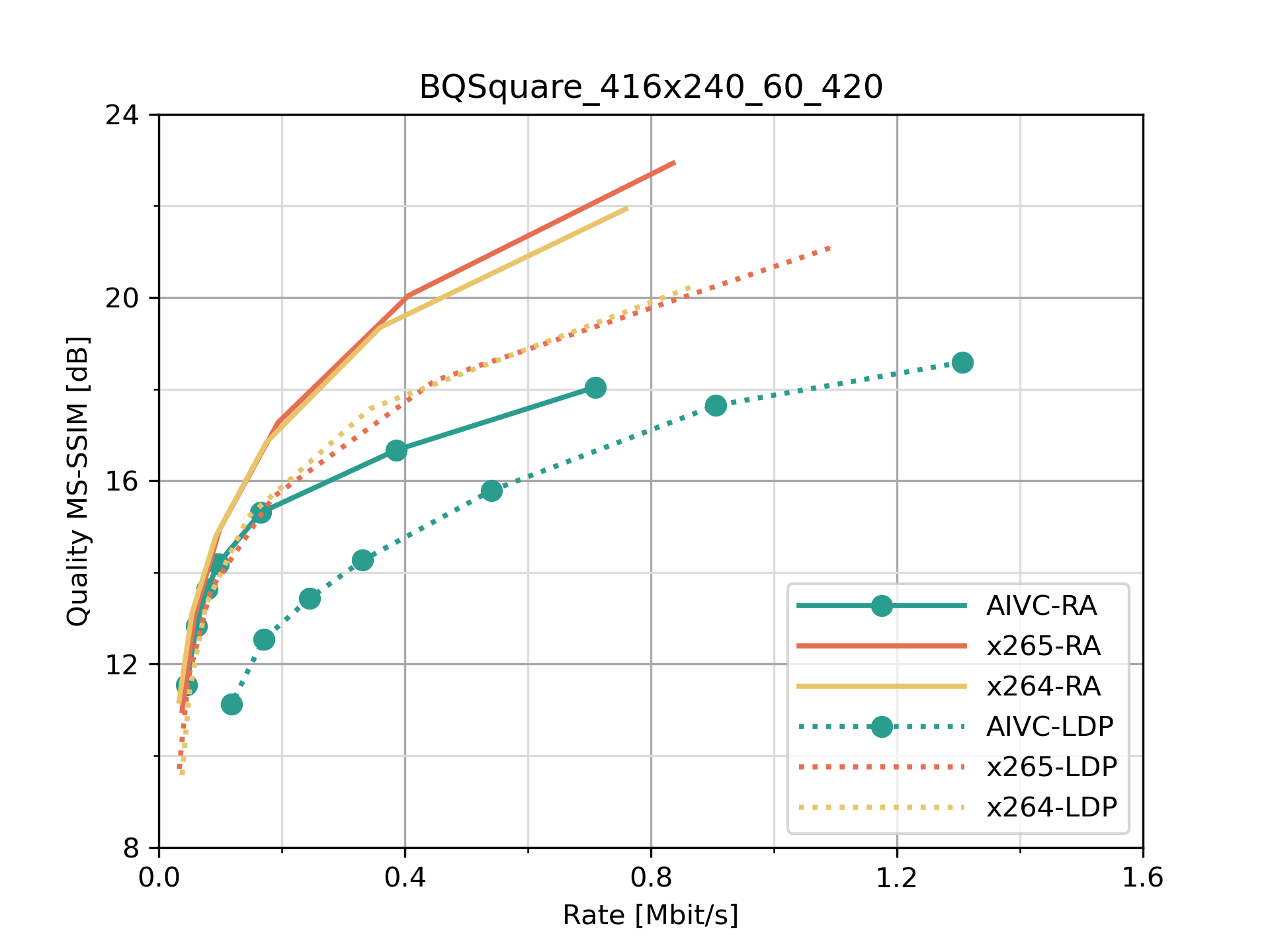 |
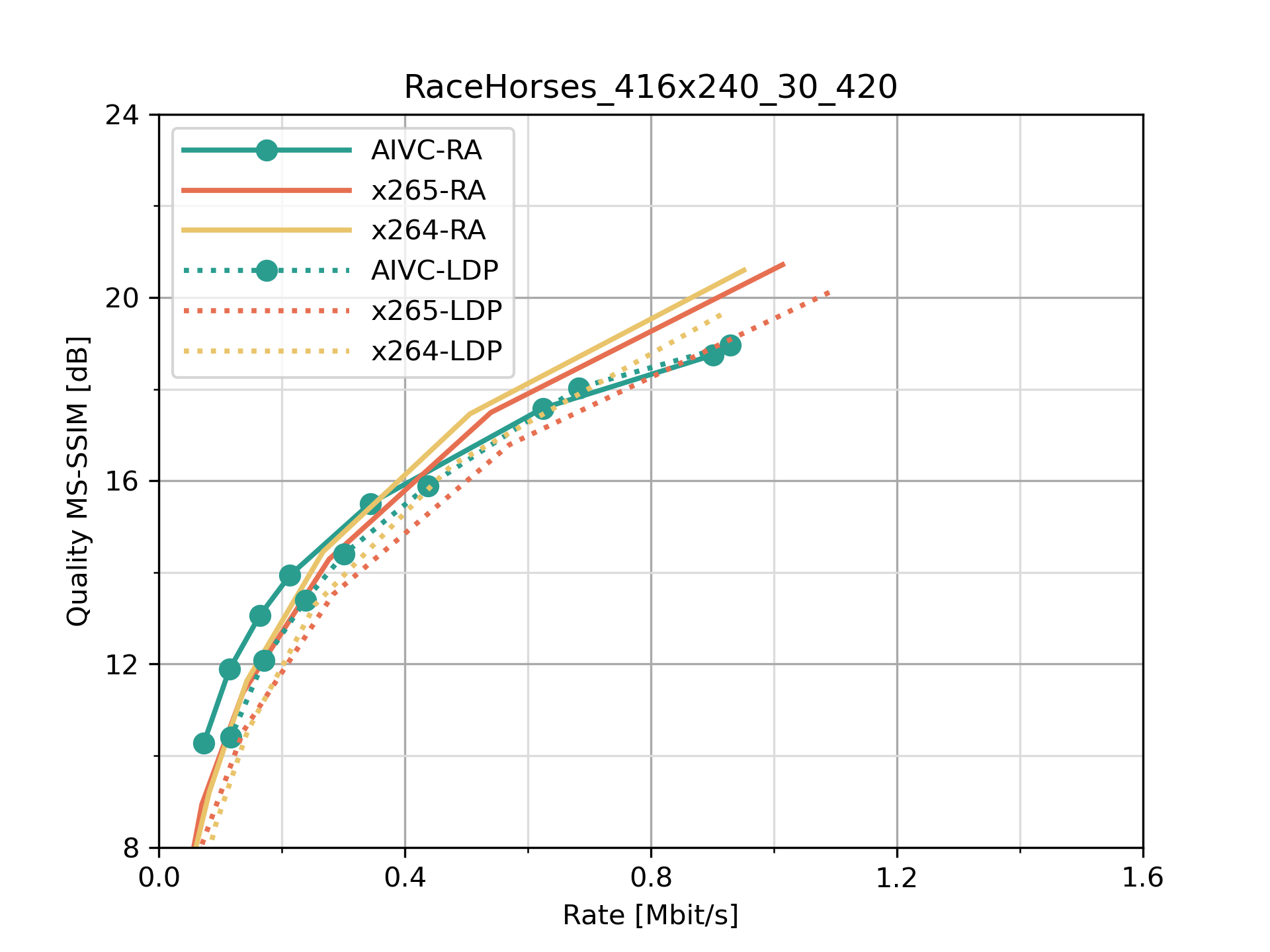 |
Class E: 720p videoconferencing sequences
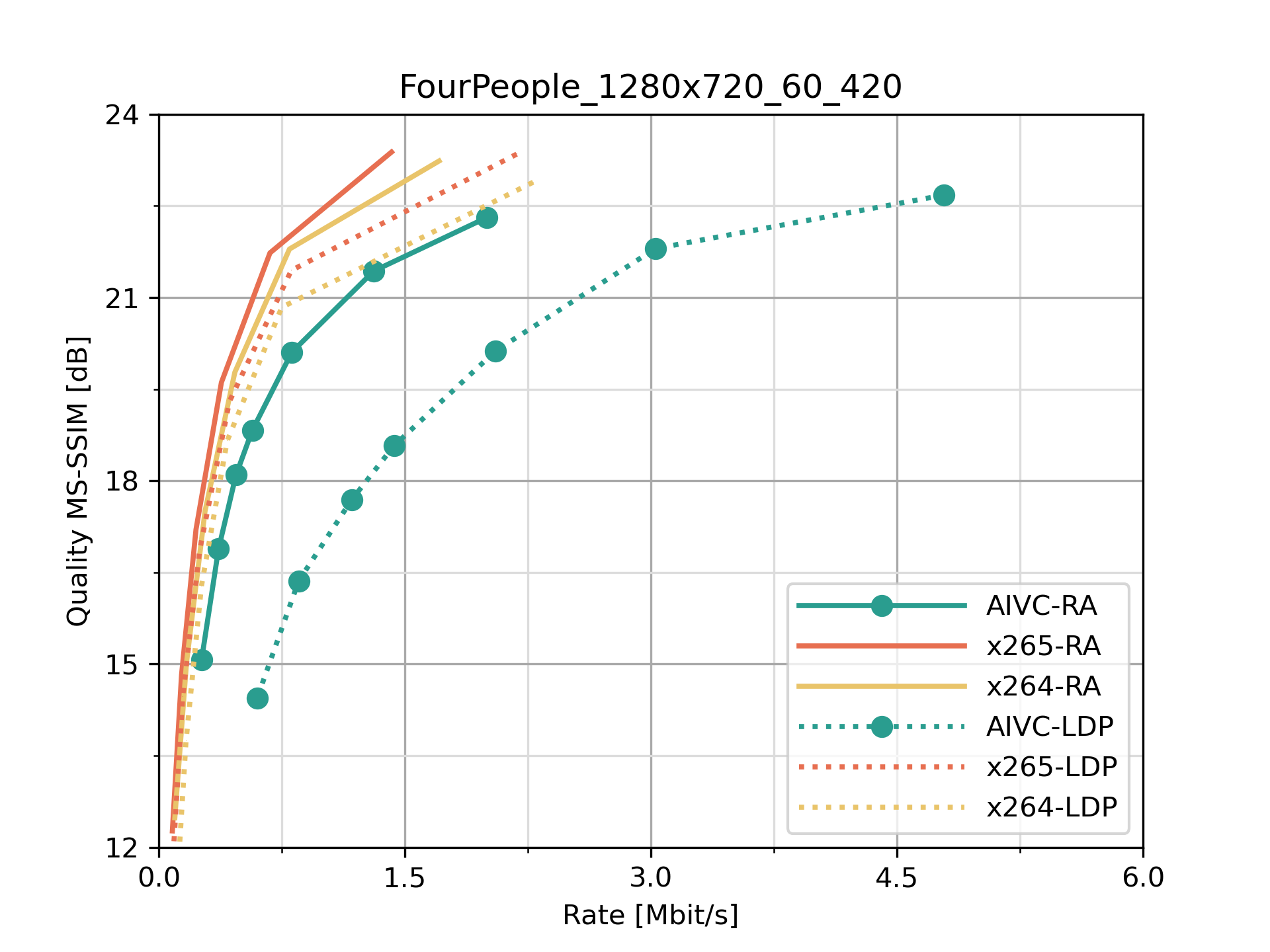 |
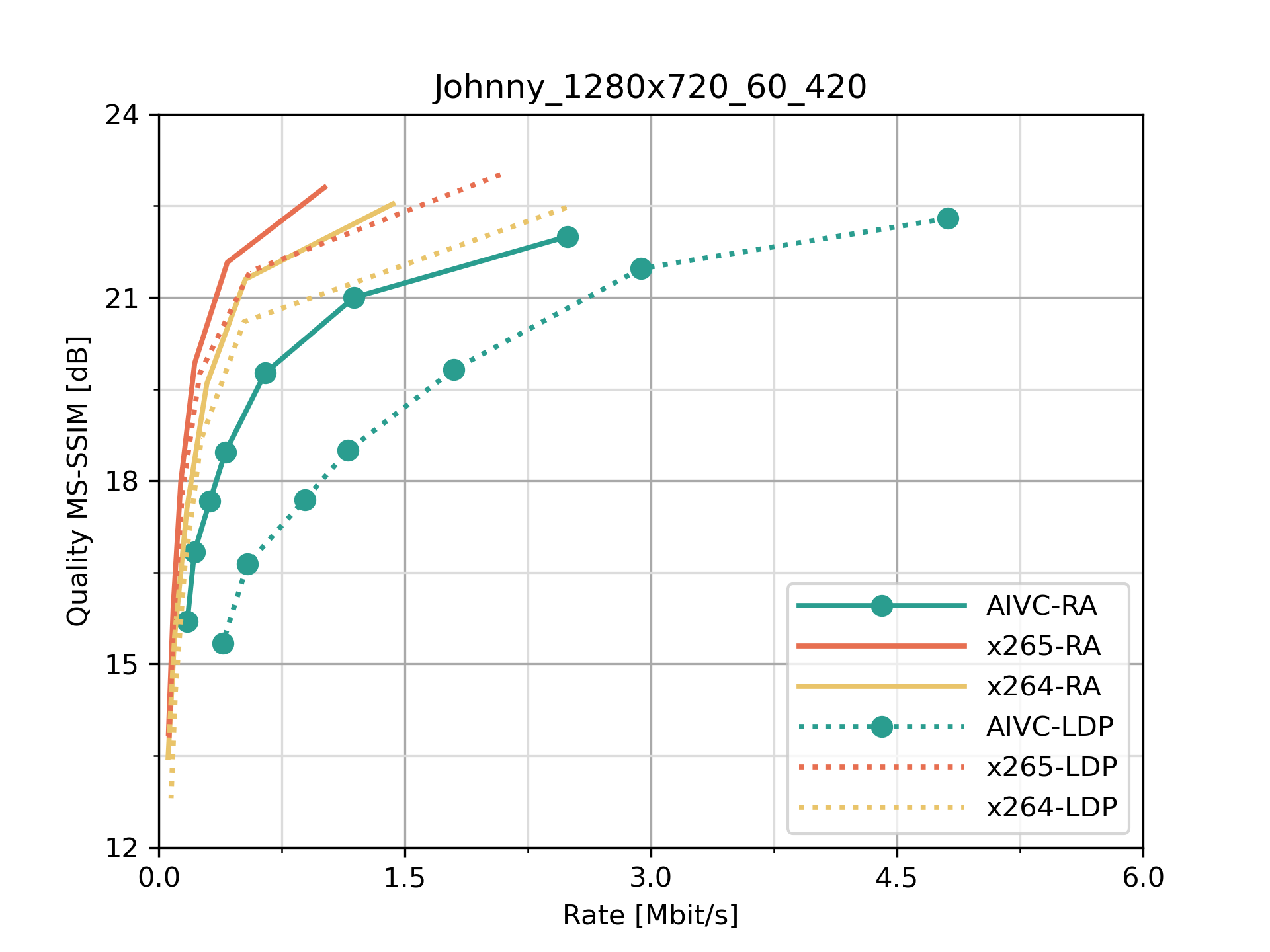 |
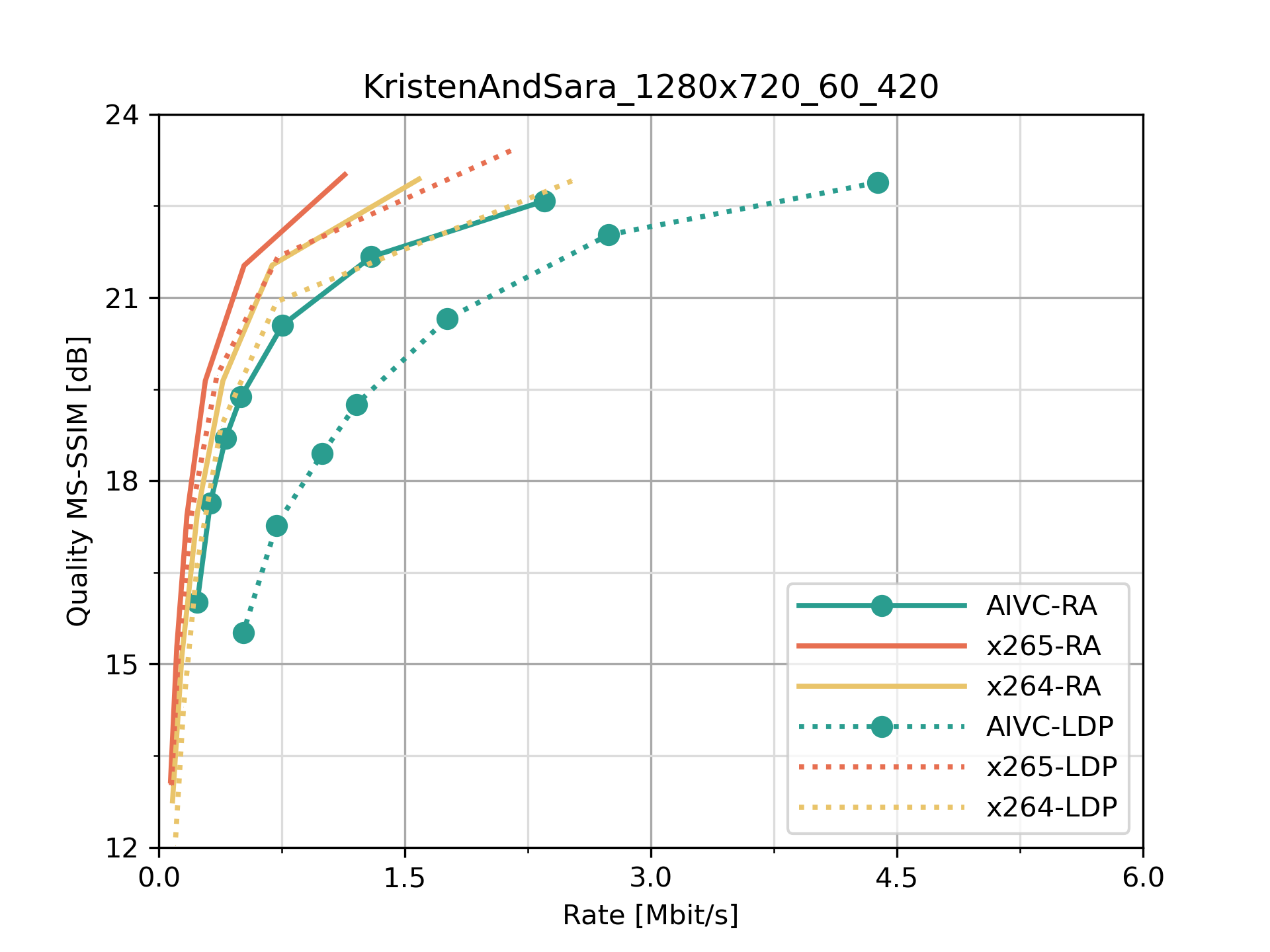 |